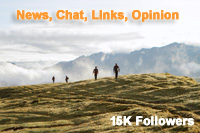Himalayan Challenge Marathon
Day 3, Part One: The Mt. Everest Challenge Marathon
Jacqueline Windh / 04.11.2013


Today was not only a marathon distance, but the final 13 km (8 miles) of the route was an extremely steep and technical descent, taking us from Molle at 3550 m (11,665’) down to the villages of Siri Khola and then Rimbik, both around 1935 m (6350’).
My hut-mate, Thamar, and I set our alarms for 4:30am, and at 5am trudged through the darkness to the food hut. It was still very cold and foggy, but the wind had died down somewhat. We returned to our room to pack our race gear. Five minutes before the 6:30 am race start, there was an urgent knocn at our door. Assistant Race Director Mansi was calling us. “Come quickly! The sky has cleared, you can see Kanchenjunga!”
Kanchenjunga is one of the highest peaks in the world, and the closest one to us here at Sandakphu. We dropped our race gear and ran out - and there it was, not a skinny pointy mountain, but a huge, rugged, snow-covered massif looming above us. The whole group was out, snapping pictures - the sky could close over at any moment. Then we rushed to finish packing the race bags, and back to the start.
Sure enough, the clouds closed over within minutes of the start, and we were back to running in the fog again. Our first 16 km (10 miles) was the same as the day before, along the ridgeline to yesterday’s turnaround at Molle. From Molle, however, we would run another 6.5 km (4 miles) of “rolling” country (read: STEEP), still following the India-Nepal border, down and then up along the ridgeline, to an outpost called Phulet. Then we would turn around and run back to Molle, now at the 29 km (18 mile) mark, to start the big descent.
So the start was the same route as yesterday…. but what a different day! We started in the fog, but as I approached the 8 km aid station (halfway to Molle), the sky cleared again - this time for real. As I and a few other runners followed the curve down to the aid station, the whole Himalaya range came into view - with one gleaming white peak standing high above the rest. Everest!
Well, sometimes I am glad to be a slow runner - and a race journalist. While one of the fast runners asked me at the end of that day “Could we see Everest from up there?” - for us back-of-the-packers, seeing Mt. Everest meant the race stopped. We pulled out our cameras, taking pictures of ourselves and each other. For all I knew, this could be both the first and last time of my life that I would see the highest mountain in the world, and I was ready to take it in.
I packed my camera away as I climbed up the hill after that aid station, only to round the next curve to find myself face-to-face with Kachenjunga. Everest may be higher, but Kachenjunga is much closer, seeming to hang over us from here. So out came the camera again. Between the clear skies and the changing views of the Himalaya as our route rose and fell, curved left and right, my progress for the next 12 km was very slow. (But I got some spectacular photos!)
Getting to Molle seemed much easier today than it had been the day before. I arrived there 5 minutes faster than yesterday, even with all of the photo stops. But the out-and-back to Phulet, which seemed so easy on paper (6.5 km each way) was incredibly hard. The views were still stunning (although it clouded over again on my way back). But it was much hillier than most of us expected, and I was nearly an hour slower on that section that I had planned for.
I arrived back at Molle to start the big descent with Jorge Tovar (Mexico) just behind me. I was faster than Jorge on the uphills, but he had been faster than me yesterday on the downhills, so I expected him to catch me soon. But my descent into the jungle proved to be a long solo trip…. (see Part Two).







 SleepMonsters
SleepMonsters



